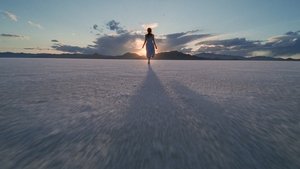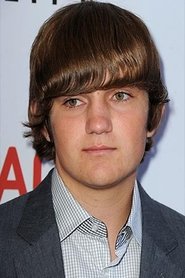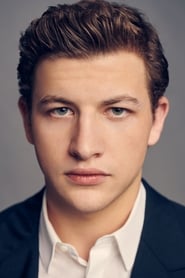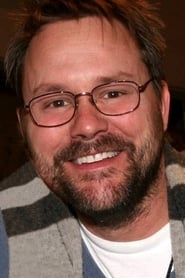Cast
View AllBrad Pitt
as Mr. O'Brien
Jessica Chastain
as Mrs. O'Brien
Hunter McCracken
as Young Jack
Sean Penn
as Jack
Fiona Shaw
as Grandmother
Tye Sheridan
as Steve
Laramie Eppler
as R.L.
Will Wallace
as Architect
Nicolas Gonda
as Mr. Reynolds
Jessica Fuselier
as Guide
Kelly Koonce
as Father Haynes
Bryce Boudoin
as Robert
Jimmy Donaldson
as Jimmy
Kameron Vaughn
as Cayler
Cole Cockburn
as Harry Bates
Crew
Director
- Terrence Malick
Writer
- Terrence Malick
Producer
- Brad Pitt
- Bill Pohlad
- Sarah Green
- Grant Hill
- Dede Gardner
Reviews
Andres Gomez
A movie that wants to mean more than what is actually telling.
Taking a lot of things borrowed from 2001, it doesn't even come close to have such a deep an interesting meaning.
Nov 29, 2013
CRCulver
Terrence Malick's <i>The Tree of Life</i> is an attempt to inject some cosmic wonder into the most mundane American story.
In the 1950s, two parents bring up three boys in an American white middle-class, small-town existence. The mother (Jessica Chastain) radiates love and warmth, while the father (Brad Pitt) feels the obligation to be cold and distant in order to prepare his sons for the cruel world that awaits them. As we are informed at the beginning of the film, sometime during this mid-century upbringing, one of the boys would eventually die. We are also shown flashfowards to the present day, when the eldest son Jack, now a successful architect working in New York City, reflects on the death of his brother decades ago. There is very little conventional spoken dialogue in this family drama. The story is told through voiceovers on top of a rich series of images, these monologues representing the inner thoughts, doubts and fears of the characters.
But Malick adds something on top of this, one of the most controversial turns in Hollywood filmmaking in recent years. Early on we are treated to a depiction of the creation of the universe and of life on Earth, from the initial clouds of gas right after the Big Bang to small nebulae, then big galaxies like our own Milky Way, the Earth as an inchoate ball of lava, life arising in tidepools, and then into the era of the dinosaurs. These special effects were created by Douglas Trumbull, best known for the cosmic visuals of <i>2001: A Space Odyssey</i>. The titles of the film quote from the Book of Job: "Where were you when I laid the foundation of the earth, when the morning stars sang together?"
I get what Malick is trying to do here, that is, to show that the trials and tribulations of an individual human life are part of some vast unknown plan. Nonetheless, while I can understand this on an intellectual level, the film does not seem to reconcile the two layers into a single coherent plot. The film is indeed a visual feast on a first viewing (a high-definition release watched on a projector is nearly as stunning as <i>2001</i>), but the <i>The Tree of Life</i> is much harder to sit through on a repeat viewing when one knows that it doesn't quite hang together. Furthermore, as thought-provoking as the story of the boys' 1950s upbringing is, the last part with its scenes of petty delinquency goes on forever and should have been cut. Finally, the ending which I won't spoil here is a total trope, not at all a fresh take on the meaning of life.
At a time when Hollywood is widely regarded as stagnant, I can appreciate a director like Malick who seeks to do something unexpected, but I find <i>The Tree of Life</i> to be rather a noble failure.
Sep 1, 2018
Filipe Manuel Neto
**Visually grandiose and made with true technical and artistic mastery, it is a film with difficult and indigestible themes, which will scare the audience with its slowness and tiring atmosphere.**
There are films that are made for some audiences and not for most people, the general public. This film is one of them: being what it is, it doesn't even try to capture our sympathy or attention. The film did very well on the festivals circuit and even won the Palme d'Or at Cannes, in addition to being acclaimed by critics and intellectuals. However, it was not understood by almost anyone but them, it seems extremely cryptic in its message and script, and it was not able to please the mass audience: the proof is in the fact that it received three Oscar nominations without, however, winning any, and not even have been considered by the Globes or BAFTA.
The film revolves around a middle-class Texan family between the present and the 1950s, and focuses particularly on the figure of Jack, the couple's son. The film shows how he lives his childhood, the unequal relationship he has with his parents (a more tolerant and good mother, and a more authoritarian and disillusioned father) and the way both, each in their own way, they try to prepare and educate him. In between, we observe the way they react to the death of one of the youngest members of the family. The film seeks to relate all this to the search for a meaning for human life, showing us images of the planet's history, and others that refer us to various spiritual and metaphysical meanings. We even got access to the characters' prayers and thoughts.
All of this is very beautiful and interesting, and I even liked the characters because they are believable, genuine, well-built, with a rich psychology and manage to capture the audience's sympathy. The problem is that this audience may not even be able to handle the first half hour of film! When cinema deals with philosophical and spiritual themes, it tends to make very meditative and slow films, which drag on and seem heavier than would be desirable. And this movie didn't even try to get away from that and make something minimally palatable. And as if that wasn't enough, director Terrence Malick decides to use a non-linear narrative that confuses us even more!
Overall, the cast did a very good job, within what was asked of him: Brad Pitt is a strong actor, who draws fans to the cinema by himself. He seems quite mature and aged in some scenes, but I think the character demanded that from him, as if visually conveying how old and world-weary the character felt. Sean Penn is just as good at what he does, even if the actor doesn't seem aware of what he's actually doing! Young Hunter McCracken, at this point, managed to untangle himself just as well and with more of a sense of direction and focus. Jessica Chastain, for her part, is stunning, and the visual beauty and costumes were particularly sympathetic to her.
On a technical level, the film really deserves to be named as one of the most significant of the year 2011, given its visual and aesthetic quality. The cinematography is some of the best and most beautifully executed I've seen in a long time, and that's all the more remarkable considering that director Malick tried to restrict the use of CGI and adopt other more conventional visuals to achieve the same results. We saw something similar in scenes from “The Fountain”, a film that came to my mind several times while watching this film, either because of the elaborate visuals or the spiritual and metaphysical theme. I also liked the sets, costumes and props, which were able to accurately recreate the atmosphere of the American middle class of the 1950s. The music and sound effects also do a very good job.
Jun 19, 2022
Thematic Analysis
As a dramatic work, The Tree of Life examines complex human relationships and emotional struggles against the backdrop of contemporary challenges that mirror our own experiences. The character development particularly stands out, offering viewers a chance to reflect on their own life journeys.
Director Terrence Malick brings their distinctive visual style to this film, continuing their exploration of themes seen in their previous works while adding new elements. Their approach to character development and emotional depth creates a viewing experience that rewards close attention.
Released in 2011, the film exists within a cultural context that continues to evolve with our understanding of its themes. Its reception demonstrates the diverse reactions to its artistic choices and its place in cinema history.
Did You Know?
- The production of The Tree of Life took approximately 32 months from pre-production to final cut.
- With a budget of $32.0 million, the film proved to be a financial success, earning back its investment and more.
- The final cut of the film runs for 139 minutes, though the director's initial assembly was reportedly 199 minutes long.
- The costume department created over 217 unique costume pieces for the production.
- The film contains approximately 1743 individual shots.
- Some visual effects sequences took up to 8 months to complete.
Historical Context
- In 2011, when this film is released:
- Smartphones and social media had transformed daily life and communication.
- Streaming services were revolutionizing film and television consumption.
- Streaming platforms were disrupting traditional distribution models and changing how audiences consumed films.
How This Film Stands Out
While The Tree of Life shares thematic elements with other films in its genre, it distinguishes itself through its unique approach to storytelling, visual style, and character development.
Unlike Contact, which takes a more conventional approach to its subject matter, The Tree of Life offers a fresh perspective through its innovative visual language and narrative structure.
While films like A Streetcar Named Desire and Finding Forrester explore similar territory, The Tree of Life stands apart through its deeper exploration of its central themes and more complex characterization.
This film's unique contribution to cinema lies in its thoughtful balance of entertainment value and thematic depth, making it a valuable addition to its genre.
Details
- Release Date: May 17, 2011
- Runtime: 2h 19m
- Budget: $32,000,000
- Revenue: $54,700,000
Where to Watch
















